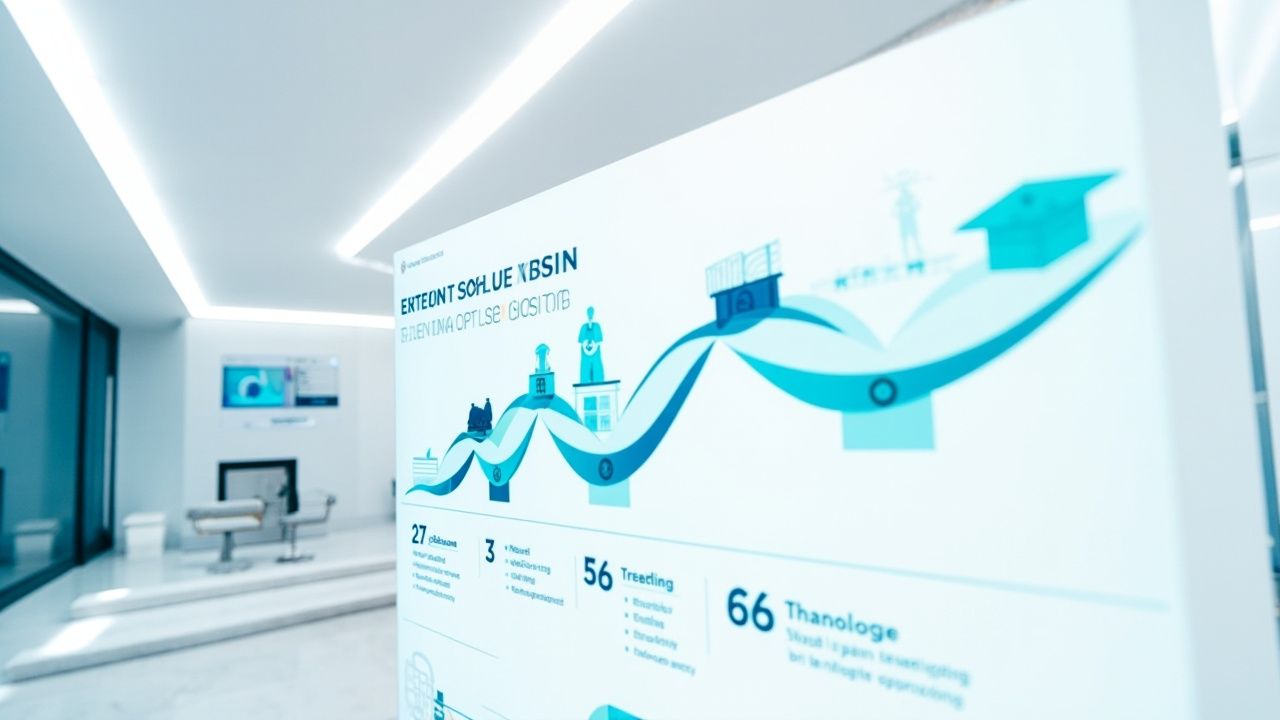In the ever-evolving realm of software development, quality assurance stands as a pillar supporting the entire development process. As applications become more sophisticated and user expectations soar, the role of software testing becomes increasingly pivotal. But how does one navigate this complex landscape to ensure high-quality, robust applications? This comprehensive guide delves into the intricacies of software testing, presenting effective strategies, cutting-edge tools, and innovations that push the boundaries of what’s possible.
Software testing is not merely a step in the development cycle; it is a continuous process that ensures the reliability, performance, and security of an application. Yet, traditional testing methodologies often buckle under the pressure of tight deadlines and complex software architectures. The key lies in adopting innovative approaches and leveraging advanced tools that streamline and enhance the testing process.
Throughout this guide, we will explore various aspects of software testing, from foundational principles to advanced techniques. We’ll touch upon the importance of automation, the rise of AI in testing, and how modern tools like GenQE revolutionize the testing landscape. By the end, you’ll have a roadmap to navigate the challenges of software testing and insight into how AI-powered solutions are reshaping the future of quality assurance.
The Fundamentals of Software Testing

Understanding the core principles of software testing is essential for anyone involved in software development. This section covers the basics and lays the foundation for more advanced topics.
What is Software Testing?
At its core, software testing is the process of evaluating a software application to ensure it meets specified requirements and functions as expected. It involves executing software components using manual or automated tools to evaluate one or more properties of interest.
Software testing is not just about finding bugs; it’s about ensuring that the software performs well under various conditions, is secure from vulnerabilities, and delivers a seamless user experience. To achieve this, testers employ a variety of methodologies and tools, each suited to different aspects of the software.
Types of Software Testing
Software testing can be broadly categorized into two types: manual testing and automated testing.
- Manual Testing involves human testers manually executing test cases without the assistance of tools. It is often used for exploratory, usability, and ad-hoc testing. Automated Testing, on the other hand, uses specialized tools to execute tests automatically, which is ideal for regression, load, and performance testing.
Each testing type serves a specific purpose and can be used in conjunction to ensure comprehensive coverage.
The Testing Lifecycle
The software testing lifecycle (STLC) is a sequence of distinct activities conducted during the testing process to ensure quality goals are met. Key stages include
- Requirement Analysis: Understanding user requirements to determine what needs to be tested.
- Test Planning: Defining the scope, approach, resources, and schedule for testing activities.
- Test Case Development: Creating test cases and scripts based on requirements.
- Environment Setup: Preparing the hardware and software environment for testing.
- Test Execution: Running tests and logging outcomes.
- Test Closure: Analyzing test artifacts and preparing test closure reports.
Understanding these fundamentals sets the stage for exploring more advanced testing strategies and tools.
The Rise of Automation in Software Testing

As software complexity grows, automation becomes a vital component of the testing strategy. This section explores the role of automation, its benefits, and how it integrates with modern development practices.
Why Automate?
Automation is crucial for several reasons. It increases efficiency by executing repetitive tasks quickly and consistently. It also enhances coverage by allowing more tests to be run in less time than manual testing would permit. Furthermore, automation reduces human error, providing more accurate and reliable results.
In agile and DevOps environments, where continuous integration and continuous delivery (CI/CD) are standard, automation ensures that code changes don t break existing functionality, allowing for faster release cycles.
Tools and Frameworks for Test Automation
A plethora of tools and frameworks exist to facilitate test automation, each with its strengths. Some popular tools include
- Selenium: A widely-used tool for automating web applications for testing purposes. Appium: An open-source tool for automating mobile applications. JUnit and TestNG: Frameworks for unit testing in Java that facilitate test-driven development (TDD).
These tools integrate seamlessly into development pipelines, enabling automated testing at various stages of the software lifecycle.
The Role of AI in Automation
Artificial Intelligence is transforming how we approach test automation. AI-powered tools, like GenQE, automate the generation, execution, and analysis of test cases. For instance, GenQE’s AI-Driven Test Generation feature analyzes software requirements and user behavior to create comprehensive test cases, significantly reducing manual effort.
Such tools not only speed up the testing process but also adapt to changes in the software, providing a more robust and flexible testing framework.
Advanced Testing Techniques and Strategies

Beyond the basics, advanced testing techniques are essential for tackling complex software systems. This section outlines several strategies that enhance testing effectiveness and efficiency.
Exploratory Testing
Exploratory testing involves simultaneous learning, test design, and test execution. Testers explore the application to identify defects that are not easily captured through scripted testing. This approach is particularly useful in uncovering usability issues and unexpected behaviors.
Exploratory testing requires skilled testers who understand the application deeply, allowing them to make intelligent judgments about where defects may reside.
Performance and Load Testing
Performance testing assesses how an application performs under expected workloads, ensuring it remains responsive and stable. Load testing, a subset of performance testing, evaluates the application’s behavior under peak load conditions.
These tests are critical for applications with high user traffic, where performance bottlenecks can lead to user dissatisfaction and revenue loss.
Security Testing
In an era where cyber threats are rampant, security testing is paramount. It involves identifying vulnerabilities and ensuring that the software is secure against attacks. Techniques such as penetration testing, ethical hacking, and code reviews are employed to safeguard applications.
With tools like GenQE, which incorporates AI-Powered Defect Detection, potential security flaws can be identified early, preventing critical issues from reaching production.
The Future of Software Testing: AI and Beyond

The integration of AI in software testing heralds a new era of quality assurance. This section examines how AI is reshaping testing processes and what the future holds.
AI’s Impact on Testing
AI introduces a level of intelligence and adaptability previously unseen in software testing. By leveraging machine learning algorithms, AI can predict potential failure points, optimize test suites, and even suggest improvements in code quality.
For example, GenQE’s Smart Test Execution prioritizes test cases based on risk analysis, ensuring that critical areas are tested first. This approach not only optimizes testing efforts but also focuses resources on high-impact defects.
The Role of Machine Learning
Machine learning enhances testing by analyzing historical data to identify patterns and anomalies. This capability is crucial for proactive defect detection, reducing the likelihood of issues reaching end-users.
Tools like GenQE use machine learning to provide actionable insights and recommendations, helping development teams make informed decisions about software quality.
The Road Ahead
As AI continues to evolve, we can expect even greater advancements in software testing. Automation will become more intelligent, tools will become more integrated, and testing will become more predictive. The focus will shift from finding defects to preventing them, fundamentally altering how we approach quality assurance.
Navigating Challenges in Software Testing

Despite advancements, challenges persist in the software testing landscape. This section explores common obstacles and strategies to overcome them.
Managing Test Environments
Setting up and maintaining test environments can be a complex and resource-intensive task. Variability in hardware, software, and network configurations can lead to inconsistent test results.
To address this, many organizations are turning to cloud-based testing environments, which offer scalability and flexibility. These environments can be provisioned quickly, ensuring consistency across test runs.
Balancing Speed and Quality
In fast-paced development cycles, the pressure to release quickly can compromise quality. Achieving the right balance between speed and thoroughness is crucial.
Automated testing tools, like GenQE, play a vital role here by accelerating test execution without sacrificing coverage. By integrating testing into CI/CD pipelines, teams can maintain high-quality standards while meeting tight deadlines.
Keeping Up with Technological Changes
The rapid pace of technological change means that testing teams must continually update their skills and tools. Staying current with the latest developments in testing methodologies and technologies is essential.
Continuous learning, community engagement, and leveraging platforms like GenQE that provide Advanced Analytics & Reporting can help teams stay ahead of the curve.
Implementing Effective Software Testing in Your Organization

Having explored the various facets of software testing, this section provides practical advice on implementing effective testing strategies within your organization.
Building a Testing Culture
Creating a culture that values quality assurance is key to successful software testing. This involves fostering collaboration between developers and testers, promoting knowledge sharing, and encouraging continuous improvement.
Regular training sessions, workshops, and open communication channels can help build a strong testing culture that prioritizes quality at every stage of development.
Choosing the Right Tools
Selecting the appropriate tools is critical for effective testing. Consider factors such as the type of application, testing requirements, and team expertise when choosing tools.
Platforms like GenQE offer a comprehensive suite of features that cater to various testing needs, from automation to defect detection. By integrating such tools, organizations can streamline their testing processes and improve overall software quality.
Continuous Improvement
Testing is not a one-time activity; it requires ongoing refinement and adaptation. Regularly reviewing testing processes, analyzing test results, and soliciting feedback are essential for continuous improvement.
By adopting a proactive approach to testing, organizations can enhance their ability to deliver high-quality software consistently.
Conclusion: Embracing the Future of Software Testing

Software testing is an integral part of the development process, ensuring that applications meet user expectations and function seamlessly. As we’ve explored, the landscape of software testing is rapidly evolving, driven by advancements in automation, AI, and innovative tools like GenQE.
By understanding the fundamentals, embracing advanced techniques, and leveraging cutting-edge technologies, organizations can navigate the complexities of software testing and deliver exceptional software products. The future of testing is bright, with AI leading the way to more efficient, accurate, and adaptive testing processes.
As you embark on your software testing journey, consider exploring tools like GenQE to enhance your processes and achieve the quality standards your users expect. The integration of AI in testing is not just a trend; it is the future, transforming how we ensure the quality and reliability of software.
“The integration of AI in software testing is not just a trend; it is the future, transforming how we ensure the quality and reliability of software.”
“By understanding the fundamentals, embracing advanced techniques, and leveraging cutting-edge technologies, organizations can navigate the complexities of software testing and deliver exceptional software products.”
As you reflect on the insights shared in this guide, consider the opportunities to enhance your testing processes and embrace the innovations reshaping the industry. Your journey towards mastering software testing begins now, and the future is promising.
Ready to elevate your software testing game? Explore innovative tools and strategies that can transform your quality assurance processes today.
Discover More Innovative Solutions
Want to learn more about the tools and technologies discussed in this article? Explore how these innovations can be tailored to your specific needs and workflow requirements.
Our team of experts is available to answer your questions and provide personalized insights into how modern solutions like GenQE can address your specific challenges.
If the link above does not work, please visit: https://calendly.com/dm-csimplifyit/30min?month=2025-05